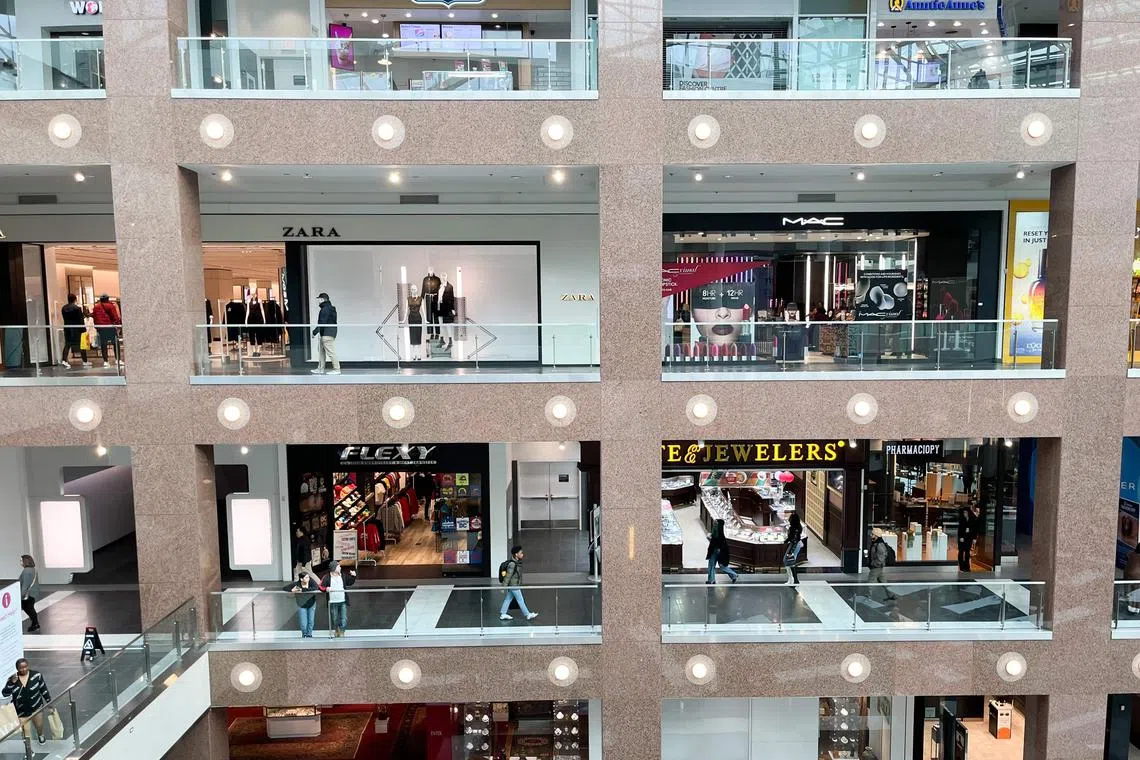US economic growth regains steam in second quarter; inflation slows
Sign up now: Get ST's newsletters delivered to your inbox

US GDP increased at a 2.8 per cent annualised rate last quarter.
PHOTO: AFP
Follow topic:
WASHINGTON - The US economy grew faster than expected in the second quarter, but inflation subsided, leaving intact expectations of a September interest rate cut from the Federal Reserve.
Gross domestic product (GDP) increased at a 2.8 per cent annualised rate last quarter, the Commerce Department’s Bureau of Economic Analysis said in its advance estimate of second-quarter GDP on July 24. Economists polled by Reuters had forecast GDP rising at a 2 per cent rate. Estimates ranged from a 1.1 per cent rate to a 3.4 per cent pace. The economy grew at a rate of 1.4 per cent in the first quarter.
US central bank officials regard a 1.8 per cent pace as the non-inflationary growth rate.
The economy, which continues to outperform global peers despite hefty rate hikes from the Fed in 2022 and 2023, remains supported by a resilient labour market even as the unemployment rate has risen to a 2½-year high of 4.1 per cent.
The personal consumption expenditures (PCE) price index, excluding the volatile food and energy components, increased at a 2.9 per cent rate after surging at a 3.7 per cent pace in the first quarter, welcome news for United States central bank officials ahead of their two-day policy meeting next week.
The so-called core PCE price index is one of the inflation measures tracked by the Fed for its 2 per cent target.
The Fed has maintained its benchmark overnight interest rate in the current 5.25 per cent to 5.5 per cent range for the past year. It has hiked its policy rate by 525 basis points since 2022. Financial markets expect three rate cuts in 2024, starting in September.
Despite the solid economic growth pace, the outlook for the second half of the year is hazy. The labour market is slowing, which will impact wage gains.
The saving rate is well below its pre-pandemic average and economists estimate that the bulk of the Fed’s rate hikes is still to be felt. State and local government revenues are also slowing, which could erode spending.
There are also worries about new tariffs, which could see businesses front-loading imports if former president Donald Trump is returned to the White House in November’s presidential election.
Nonetheless, a recession is not expected, with monetary policy easing anticipated in 2024. REUTERS

